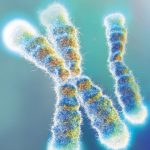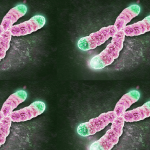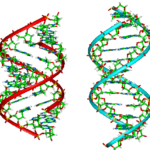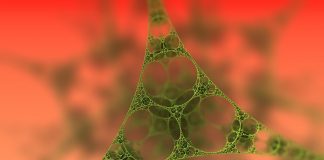Telomere Shortening: Causes, and Consequences on Aging

Many studies point out that telomere shortening is associated with aging [A] [B]. However, the speed of the phenomenon varies from person to person, and no one really knows why. In this article, we will look at the many causes that could explain telomere length differences in people.
Causes of accelerated telomere shortening influencing aging
Many factors can speed up aging and telomere shortening
The speed at which telomeres shorten is different between men and women [1]. One study showed that in a group of 48-year-old men and women, there was a significant difference in telomere length of about 320bp [1]. Telomere shortening seems to be faster in men than in women. Telomere length being associated with age and with the aging process (see: Telomeres : at the heart of the aging process), we see this difference as one explanation as to why women have a longer life expectancy, on average, than men.
Some external factors can accentuate telomere shortening, too. For instance, smoking, stress or work conditions can play a role [2], as well as poor health (obesity, inflammation, cardiovascular diseases [2]).




Many of these factors are present in our genome itself, in such a way that it seems programed to make our bodies age. The sequence of telomeric DNA contains guanine in significant proportions. However, guanine shows a high risk of oxidation into “8 – oxo guanine,” which is a composite causing many malfunctions in the genome that are not easily fixed [2]. Its composition itself could affect telomere aging.
All of these factors can speed up telomere shortening, aging, and increase the risk of early death.

Stress speeds up aging through telomere shortening
Aging and stress in the workplace: accelerated telomere shortening
Stress in the workplace occurs when there is no balance between what a person perceives the constraints are and how well they feel they can deal with them. Although stress is not a disease, prolonged exposure to it has negative effects on health. It is called chronic stress [5].
Many studies have shown a link between chronic stress in the workplace and a degradation in health. The risk to develop cardiovascular diseases increases as the capacity of the immune system decreases [6]. Although the missing link between stress and health (and aging) has not yet been singled out, we know that it tampers with cell function. However, cell environment plays an important role when regulating telomere length and telomerase activity. Researchers studied healthy women under different levels of chronic stress to determine if it had any impact on telomere length or influence on their physiological age [6].
The subjects under a more important stress had shorter telomeres. On average, there is a 550bp difference in telomere sequence length, no matter the chronological age of the subject, between the subjects undergoing high levels of stress and those with low levels of stress in the workplace [6]. The difference is linked to a 10 years increase of the biological age [6].
In the high-level stress group, telomerase activity is 48% lower than in subjects in the group with lower levels of stress. When this decrease of telomerase activity becomes chronic, it contributes to accelerated telomere shortening [6].
This proves the influence of extracellular factors, such as stress in the workplace, on telomere shortening. It would then be strongly linked to an increase in oxidative stress, a decrease of telomerase activity and an acceleration of telomere shortening. All of these would result in early cell senescence [4], which impacts the lifespan of the cells as well as the physiological age.


Smoking and excess weight speed up telomere shortening as well as the aging process
Faster telomere shortening with smoking and excess weight
Researchers formulated that excess weight and smoking could increase the risk of developing age-related diseases. On top of having negative consequences on health, such as an increase in inflammation or the development of oxidative stress, the two factors seem to worsen telomere shortening [7]. What influence do they have on physiological aging?

The effects of smoking and excess weight on telomere shortening and biological aging
Studies have compared the telomere length of women between the ages of 18 and 76. It was first observed that telomere length decreases steadily with age: the subjects seemed to lose 27bp per year [7]. However, the telomeres of overweight women were 240bp shorter than in those with a “regular” body mass. This difference in telomere length represents roughly an 8.8 years increase in physiological age [7].
Regarding smoking, a link between aging and the amount of smoking was pointed out. In the smokers group, each year saw a loss of an extra 5bp of telomeric DNA, which amounts to 18% more of a loss than in non-smokers. This gives us an extra 4.6 years of biological age for smokers, 7.4 for those who smoked one pack a day for 40 years or more [7].
This study is very significant in terms of diversity in telomere shortening speed from one person to another. Both smoking and obesity seem to be risk factors that directly influence life expectancy.

Different speeds of telomere shortening and aging depending on SES
The link between telomere shortening, SES and accelerated aging
Socio-economic status (SES) determines the rank of an individual in society by referring to a combination of many social and economic factors. Many studies have shown that in people with a low SES, there is a bigger risk to develop cardiovascular diseases, breathing conditions, joint pain and mental health issues [8]. Poor socio-economic conditions could then decrease one’s life expectancy.
Researchers used telomere length as a biological marker of aging in order to prove the existence of a link between aging and SES. The study was led on the white blood cells of 1552 twin women whose telomere length was measured. At the same time, the subjects answered a set of questions regarding their profession, level of education, income, smoking habits, fitness levels, height and weight.
Telomere length varied greatly, but was significantly shorter in subjects with a lower SES [8]. When all parameters are similar, subjects doing manual labor showed 163bp less on their telomeres than those with desk jobs. This represents about 8 times the average quantity of telomeric sequence lost every year, based on the data of all participants.
Origin of the link between SES and accelerated telomere shortening and aging
There was no evidence that this difference originates in poverty. In fact, no link was found between a subject’s income and their telomere length [9]. However, another reason could explain these differences: a lack of access to information regarding health risks, despite there being no significant correlation between the level of education and telomere length [9] when all other parameters are similar. The explanation behind those differences in telomere length between people of different SES levels remains to be determined.
However, the study allowed to highlight that poor socio-economic conditions increase the influence of external factors such as smoking, obesity and lack of exercise on telomere shortening.
Many factors can influence telomere length [8]. One could think that we could increase our life expectancy by acting directly on these factors, even though the mechanisms explaining their link to physiological aging are still unclear.
See all of our articles on “Telomeres and aging”:
Telomeres, at the heart of the aging process
 How and why does telomere shortening seem central to the aging process ? What is their role? How do they influence the aging process? And why do we call telomeres the “biological clocks” of our body?
How and why does telomere shortening seem central to the aging process ? What is their role? How do they influence the aging process? And why do we call telomeres the “biological clocks” of our body?
Part 1: Causes and consequences of telomere shortening during aging
 It is unclear how fast and why telomere shortening speed and aging vary from person to person. Indeed, the possible causes of telomere shortening can vary greatly.
It is unclear how fast and why telomere shortening speed and aging vary from person to person. Indeed, the possible causes of telomere shortening can vary greatly.
Part 2: Accelerated aging due to telomere and telomerase malfunction
 Telomere length and telomerase seem to be key factors of the aging process. Many studies on diseases resulting from mutations on telomerase components have shown that it leads to a lesser quality of cell renewal, which is a phenotype linked to aging.
Telomere length and telomerase seem to be key factors of the aging process. Many studies on diseases resulting from mutations on telomerase components have shown that it leads to a lesser quality of cell renewal, which is a phenotype linked to aging.
Part 3: Telomeres and telomerase in stem cells: central to the aging process
 Telomerase expression diminishes in the few weeks that follow birth in most adult tissues, with the exception of certain types of cells such as stem cells. One can wonder if there is a link between the fact that the quantity of stem cells is lowered with age, telomerase function, and telomere length.
Telomerase expression diminishes in the few weeks that follow birth in most adult tissues, with the exception of certain types of cells such as stem cells. One can wonder if there is a link between the fact that the quantity of stem cells is lowered with age, telomerase function, and telomere length.
Part 4: Towards an aging metrology with telomeres
 To measure aging, several methods based on telomere length have been developed. Today, there are 5 main methods, among which TAT, and STELA. They allow to obtain precious indications on physiological age and aging, from telomere length.
To measure aging, several methods based on telomere length have been developed. Today, there are 5 main methods, among which TAT, and STELA. They allow to obtain precious indications on physiological age and aging, from telomere length.
Part 5: Telomeres and aging, what therapies?
 Telomere length is becoming an interesting lead to elaborate therapies and solutions to fight aging. We can speak of Elizabeth Parrish, CEO of BioViva, a biotech company in the US. She tested on herself two gene therapies developed by her own lab, one of which aims to lengthen her telomeres for “rejuvenation” purposes
Telomere length is becoming an interesting lead to elaborate therapies and solutions to fight aging. We can speak of Elizabeth Parrish, CEO of BioViva, a biotech company in the US. She tested on herself two gene therapies developed by her own lab, one of which aims to lengthen her telomeres for “rejuvenation” purposes
Katidja Allaoui

Author
Auteure
Katidja studied biology and health engineering at the school of engineering of Angers.
More about the Long Long Life team
Katidja a étudié l’ingénierie de la biologie et de la santé à l’école d’ingénieurs de l’université d’Angers.
En savoir plus sur l’équipe de Long Long Life
Dr Guilhem Velvé Casquillas

Author/Reviewer
Auteur/Relecteur
Physics PhD, CEO NBIC Valley, CEO Long Long Life, CEO Elvesys Microfluidic Innovation Center
More about the Long Long Life team
Docteur en physique, CEO NBIC Valley, CEO Long Long Life, CEO Elvesys Microfluidic Innovation Center
En savoir plus sur l’équipe de Long Long Life
Sources :
[1] Blasco, M. (2007). Telomere length, stem cells and aging. Nature Chemical Biology, [online] 3 (10), pp.640-649. DOI :10.1038/nchembio.2007.38 [Accessed 22 May 2017]
[2] Shay, J. (2016). Role of Telomeres and Telomerase in Aging and Cancer. Cancer Discovery, [online] 6(6), pp.584-593. DOI : 10.1016/j.semcancer.2011.10.001 [Accessed 22 May 2017].
[3] Wolkowitz, O. M., Jeste, D. V., Martin, A. S., Lin, J., Daly, R. E., Reuter, C., & Kraemer, H. (2017). Leukocyte telomere length: Effects of schizophrenia, age, and gender. Journal of psychiatric research, 85, 42-48.
[4] Blasco, M. A. (2007). Telomere length, stem cells and aging. Nature chemical biology, 3(10), 640-649.
[5] http://www.journal-officiel.gouv.fr/publications/bocc/pdf/2009/0019/CCO_20090019_0019_0041.pdf
[6] Epel, E. S., Blackburn, E. H., Lin, J., Dhabhar, F. S., Adler, N. E., Morrow, J. D., & Cawthon, R. M. (2004). Accelerated telomere shortening in response to life stress. Proceedings of the National Academy of Sciences of the United States of America, 101(49), 17312-17315.
[7] Valdes, A.M. et al. Obesity, cigarette smoking, and telomere length in women. Lancet 366, 662–664 (2005).
[8] Balia, S., & Jones, A. M. (2008). Mortality, lifestyle and socio-economic status. Journal of health economics, 27(1), 1-26.
[9] Cherkas, L. F., Aviv, A., Valdes, A. M., Hunkin, J. L., Gardner, J. P., Surdulescu, G. L., … & Spector, T. D. (2006). The effects of social status on biological aging as measured by white‐blood‐cell telomere length. Aging cell, 5(5), 361-365.



![[Video] Eurosymposium on Healthy Ageing, Brussels, 2018 Eurosymposium on Healthy Aging](http://www.longlonglife.org/wp-content/uploads/2019/07/P1310252-218x150.jpg)










